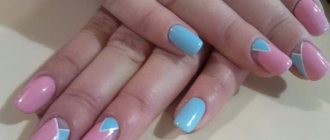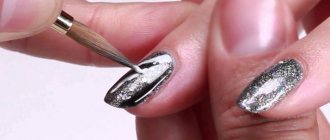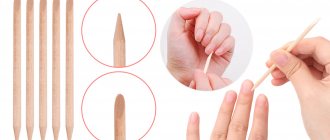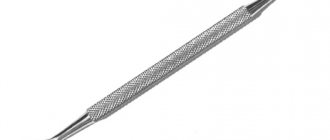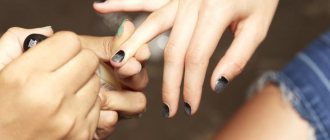Do you want to become a nail artist? Get ready to face harmful manicure dust!
Leave your contacts and we will tell you how to avoid it using Tornadel!
Thank you! We will contact you shortly.
Choose a hood that suits you 100%
To catalog
All March
Free delivery with promo code “0803”
To catalog
Where to begin?
If you decide to become a nail service master, you need to clearly determine what it is for and whether this work is right for you.
To the first question, as a rule, girls give one of two answers: for earnings or for beauty. And if the craving for beauty and the desire to ennoble ladies’ nails will allow you not to lose your ardor for years, then a purely pragmatic calculation will quickly drive you into a dead end. The fact is that the initial stage of working in the nail industry is especially difficult: the work is hard, it takes a lot of time, and there is practically no income. And it will be difficult to cope with huge competition without equipment and skills.
You can find out whether you like this or that business only through practice, but you can form an approximate opinion now. Thus, the masters we interviewed said that to work with marigolds you need:
- Live your own business. If you spend your free time looking at inspiring nail decor ideas, learning new techniques, and following industry news, work will not be a burden to you.
- Be careful and diligent. With some types of manicure, for example, French or moonlight, you will have to work hard - one awkward move and everything will have to be redone. To prevent work from turning into hell, you must have a penchant for painstaking and scrupulous work.
- Be able to get along with people. Manicurists are subtle psychologists. In parallel with performing your direct duties, you need to create a favorable psychological environment: chat with one client, listen to the second, and just sit in silence with the third.
- Maintain discipline. You will have to keep track of time in order to manage to serve more than 1 client per day and manage your schedule.
Do you want to become a nail artist? Get ready to face harmful manicure dust!
Leave your contacts and we will tell you how to avoid it using Tornadel!
Thank you! We will contact you shortly.
Is it profitable to do manicure at home?
Those who prefer going to a manicurist at home to a salon highly appreciate the budget cost of the service. It is these people who will form your client base if you intend to work from home. But this will happen if these people are sure that nothing threatens their health.
At the same time, it is unlikely that any of them will ask you to present a certificate or diploma. Your practical skills and your compliance with sanitary standards will be much more important. So, in addition to the necessary equipment for manicure, you will have to purchase a disinfectant, and the room, especially the work desk, must be sterile clean.
Investments in business will not be so large. Purchasing the necessary set of professional tools and materials will cost about 50,000 rubles.
The price for a manicure will depend on your qualifications and region of residence. Around the country it varies from 400 to 2000 rubles. If you start accepting at least 4 clients per day at a price of 500 rubles per job, then you will have 2000 rubles per day. Monthly income with 15 days of work will be 30,000. Exclude consumables from here (3-5 thousand rubles). everything else is yours. As your skill increases, your income will increase.
But... you will have to be prepared for the fact that the apartment in which you live and work will turn into a walk-through yard. It will require regular thorough cleaning, sterilization and cleaning of the premises. This is provided that in the room where you receive clients there are no carpets, bookshelves, curtains, or anything that perfectly absorbs and accumulates nail dust.
You put yourself and your family at risk of developing allergic diseases, since nail cuttings and skin residues will settle in your home, where you eat, sleep, and live.
In addition, by working from home you set a “ceiling” for yourself. You yourself know very well - you can be a professional of any level, do a manicure very professionally, but still a VIP-class client will not come to someone’s apartment. He will go to the salon, where the prices are higher.
So it turns out that you do the same work for less money.
This means that working from home is only a temporary solution. You still need to have your own corner for developing new techniques and expanding the range of services.
How long does it take to study and how much does it cost?
You can and should learn the art of nail treatment all the time, but basic knowledge can be gained in a relatively short period of time. You can learn the basics of proper cuticle treatment, nail shaping, plate extensions, high-quality finger care, as well as various designs in an average of a couple of weeks. Then you can devote 2-3 months of continuous practice with models and now you can proudly call yourself a manicurist.
By typing a query about manicure courses into a search engine, you will see a whole bunch of offers. But let’s not throw ourselves into the pool headlong and learn how to structure these sentences.
Price policy
Due to the fact that pricing for services varies in all cities, you should study the market specifically in your city yourself. Analyze the prices offered by manicure studios and independent artists. The final cost of your work should be based on the cost and quantity of materials used, as well as the complexity of the work itself. Just so that your price list looks more attractive than that of competitors, but does not negatively affect the final profit, do not be lazy and look for the best prices for consumables and equipment.
At first, it is not recommended to “bend” the price too high, but you shouldn’t work at a loss either. To begin with, develop a stable client base, attracting consumers with a pleasant price, and then gradually increase the prices for your services, maintaining the initial cost for regular customers.
Studio training
Perhaps the best option for developing skills. During the courses you will be able to calmly ask questions, learn new things, follow the practice of masters, work under their guidance - in general, closely learn from experience.
However, today almost every studio offers its own training course. How to choose the best? We advise you to pay attention to a number of factors:
- Reviews and works of masters and students. A big name, promises, advertising slogans - all this is easy to come up with and buy. Don’t be fooled by words, get to know the results: where and how former students work, how they respond to the course. It is also worth getting acquainted with the teaching staff and assessing the level of skill.
- Number of students. Find information on how many students have completed these courses to determine whether they are in demand. It is also worth finding out in advance what the size of the group is: the more students there are, the less attention they will pay to you. But you want to get the most out of your investment, don’t you?
- Contents of the program. Beginning masters should not grab hold of complex technologies; they should first get a strong base. If you are promised to conquer classic manicure, European care, and hardware technology, run as far as possible from such a unfortunate school.
- Certificate with wet seals and signatures. Anyone can print out a colorful piece of paper with the proud name “Certificate”, but not everyone is ready to bear responsibility for the quality of your training.
Choose a hood that suits you 100%
To catalog
Development
Basic courses and accumulated experience are some of the most important aspects of a master’s work, but do not forget about improving skills. A nail artist must follow industry trends and learn new tricks. If basic training is worth taking offline, then learn different designs, learn how to increase speed, etc. possible in online format. This option is the most convenient for a certain category of masters, since the video can be watched at any time, without being distracted from everyday work.
Trends change at the speed of light, and every person has the Internet, so the client may want any design, and you must be ready for this. Subscribe to our instagram to stay up to date with all the most stylish designs.
How to become a successful manicurist yourself?
On social networks, YouTube and thematic blogs you can find a lot of educational information on manicure. Why take courses and spend money when you can just collect it?
Yes, self-study is a real opportunity to master the intricacies of creating a manicure. Having set a goal, you can watch videos, read articles and look at pictures for a couple of weeks, and then start practicing. So, you will master basic skills and be able to give a decent manicure to yourself, your family and friends.
However, you can forget about working in a salon or studio - without serious preparation or at least extensive practice, you will not be allowed there. Also, you are unlikely to be able to sell your services, since most clients are interested in the availability of supporting documents and equipment from the masters.
If you are ready to become a master only for your friends, you can save money and train yourself. If nail service is an opportunity to earn money for you, you will have to forget about self-training.
List of tools required for manicure:
- Tweezers
- Cuticle scissors
- Tweezer scissors
- Device for hardware manicure
Since manicure is called “hardware”, it means that it requires a special device. Today there are a large number of devices on the market, however, the choice must be taken very carefully. You should not choose the cheapest device; it is better to pay extra and calmly work on high-quality equipment that will not let you down.
The set should include special cutters for manicure and gel polish removal.
You won't be able to start working without lamps. You need at least one lamp to illuminate your workplace, and the second to dry gel polish. When purchasing an LED lamp you need to pay attention to:
- lamp power (power must be at least 48 W);
- the bottom of the lamp must be removable;
- the light bulbs inside the lamp should be located evenly around the entire perimeter of the device;
Types of coating
- Base coat (there are two types of bases: rubber - more durable, and camouflage - it can be used without further coating with gel polish, it itself has a color);
- Gel polish (now there is a large selection of gel polishes for every taste and budget);
- Top coat (necessary for fixing the gel polish; there are several types of top coat: glossy, matte and with glitter);
- Cuticle oil;
Additional funds
- Antiseptic (necessary to disinfect hands);
- Primer (a product that promotes better bonding of gel polish to the nail);
- Degreaser;
- Files;
- Polishing file - buff;
- orange sticks;
Items needed for work
- Desk (you need to choose a table based on your needs and the size of the room);
- Chair or armchair (for the master and for the client);
- Rack or cabinet (to properly organize your workspace);
- Palm rest;
- Manicure hood (our company Tornadel offers a large selection of hoods that will suit every taste and budget);
- Artificial lighting (without light it is impossible to do a high-quality manicure);
- Cabinet;
Types of manicure business
At the planning stage, it is important to choose a format:
- Manicure salon. A room designed to accommodate a maximum of 2 craftsmen. Advantages: classic format, standard services, low start-up costs. Disadvantages - small area, difficulties with expansion.
- Studio. Beauty salon with all types of manicure and pedicure and qualified personnel. Advantages: above-average prices, wide-skilled specialists. Disadvantages: large investments, long payback period. In addition, it is not always possible to fill the salon with clients.
- Express manicure (nail bar). Open counters in shopping centers. The advantage is the location in a high traffic area. Disadvantages - expensive rent, psychological factor (many clients cannot relax when undergoing cosmetic procedures in front of everyone), reputation as a budget establishment (repels many). The business cannot be expanded.
- Manicure at home. Business with minimal investment. At the initial stage it will not even require registration. A good option for both a beginner who wants to have an independent source of income, and an experienced one with an established client base. A home studio has a lot of advantages - small investments, the ability to record at any convenient time. Disadvantage: lack of reputation. People don't trust home craftsmen - it's unknown what their skill level is.
Let's look at what it takes to open a manicure studio from scratch.
What is necessary for client safety?
It goes without saying that all instruments and work items must be sterile. Your workplace should be clean.
To do this, it is necessary to disinfect work surfaces, tools, lamps, etc. after each client.
In addition, the master must work in a mask and gloves, which will protect him from small particles of dust and toxic chemical fumes getting into his eyes and respiratory tract.
Use special disinfection baths and sterilizers.
Treated tools can be stored in craft bags.
How to find clients?
The first thing you need to do is get your teeth in, which is why usually your first clients are: relatives, friends, acquaintances, and so on. Then word of mouth will start working for you, and if you really do a high-quality manicure, new clients will not keep you waiting.
It is not necessary to immediately get a job in a salon or rent an office; you can start working at home by equipping a separate work area there.
Also, at first, new clients may be attracted by the low cost of your services, but remember that over time you will become more experienced, expand your portfolio, and, accordingly, the price of manicure will need to be raised.
We also must not forget that we live in an age of high technology and we need to use it wisely. You can place advertisements for the provision of services on Avito, Yula, or in certain communities on social networks.
You can print out business cards and distribute them to your friends, who will be able to tell their other friends about you, the main thing is not to be afraid to start.
If you feel confident, then you can get an internship at a salon where there is already a ready-made client base, and all you have to do is prove yourself.
How to train a beginner specialist
It is not enough to learn the basics of your future profession. This may sound banal, but you can experiment and hone your skills, first of all, with close people. They are the most grateful clients:
- they won't rush you,
- will indicate an error
- will express objective criticism.
This will only help hone your skills, gain confidence and build a portfolio base. Be sure to photograph and sign each of your successful works. This will help you in your job search. In addition, a gallery of pictures is an excellent demonstration of your development and an incentive for further growth.
If your clients start showing off their manicure on social networks, this will be additional advertising for you and an opportunity to attract new clients.
Further improvement of skills will occur in the process of work. You should not count on absolutely perfect execution of your first orders. But your first customers are your friends. They will forgive you for this.
Even when working with third-party clients, you should not charge an increased fee, but rather the minimum. With the growth of skill and expansion of the client base, the income received from high-quality services will also increase.
Advantages and disadvantages of work
The Instagram accounts of nail artists shine: photos of luxurious ladies, neat workspaces with a bunch of equipment, screenshots with reviews from grateful clients. How can you not be envious and quit your disgusting job in a drab office? But these accounts hide hard work, which has its pros and cons. By getting to know them “on the shore,” you will save yourself from severe disappointment.
Benefits for which you can do a manicure:
- Demanded trade. Well-groomed nails are an essential attribute of a modern woman who cares about her image. Schoolgirls, students, mothers, working women - each master has his own audience.
- Short-term training and its low cost . After completing a two-week course and gaining basic knowledge, you can safely start accepting clients. Then all that remains is to improve your qualifications.
- Flexible work schedule . This point applies more to self-employed artists, since nail studio workers are often deprived of this privilege. Single masters themselves decide when to accept a client and when to take a day off.
- Realization of creative potential. If you have always dreamed of creating, rejoice, now your works are distributed throughout the city and region.
- Opportunity to meet interesting people. A good master is a friend to his clients. Today you painted the nails of a famous lawyer, and tomorrow she has already helped draw up an important contract.
- Stable influx of clients. If you win the client’s trust, she will visit you regularly, whereas in other areas of the beauty industry such consistency can only be dreamed of.
But working as a manicurist also has its disadvantages , which few people notice:
- Harmful to health. While working, you will almost always be in a bent position, bending over your nails. You will also have to constantly inhale vapors from the compounds and dust from nails and filed manicures. When working on a design, you will have to constantly strain your eyes. The load comes from all sides, but you can cope with it by purchasing a comfortable chair and table, an extractor hood and a mini vacuum cleaner, a good lamp and safety glasses.
- Large financial investments at the start. To get started, you will have to purchase a basic collection of colored varnishes, primaries, bases, fixatives, dryers, tools, a couple of correction devices and much more. All this costs a lot of money and takes a long time to pay off.
- The need for constant development. Fashion is constantly changing, new techniques and new tools appear. Clients will not support your conservatism and will go to other masters.
- Excessive busyness. This catch awaits experienced craftsmen who have already gained a clientele. The dream of an experienced master is a full day off, when not a single client will need correction. But how can I refuse them - all my clients are my own, my family.
- Ungrateful, conflictual and problematic clients. Where would we be without brawlers, deceivers and outright fools - the nail industry is not left without them. Sometimes you have to come into contact with very aggressive and negative individuals, and you need to learn this.
Pros and cons of the profession Manicurist
The specialty has many attractive aspects:
- The main advantage is the demand for the service provided;
- To start earning money, you don’t have to spend several years studying;
- Career growth opportunity: opening your own studio or beauty salon;
- Possibility of constant development: technologies and consumables are constantly being improved.
The disadvantages of the profession include:
- The need to be painstaking: if it is not easy for a person to sit in one place, it will be quite difficult for him to work;
- Sedentary nature of work, heavy load on hands and musculoskeletal system;
- Constant contact with chemicals and dyes.
A special feature of the specialty is the ability to communicate with clients and find an approach to them. Girls often come to their manicurist as a friend or psychologist. He must be sociable: be able to listen, feel, carry on a conversation, have a sense of tact and patience.
Tips for beginners
- You must smile, be friendly and polite, despite your mood or any personal problems or worries. People come to you for beauty, and not to ruin their mood.
- Distribute your working time correctly. Give yourself time to rest. Don’t chase the number of clients; it’s better to relax a little and do quality work than to work under a constant deadline.
- Your workplace should be perfectly clean. There simply cannot be chaos.
- A novice master should look attractive. Whatever one may say, a person is greeted by his clothes, so you must be perfect, starting with your hairstyle and ending with your nails. Beauty attracts and disposes.
- You need to constantly monitor new trends and be aware of the latest fashion trends.
- In your speech, you must adhere to an easy communication style; you must be ready to listen to the client, even if he criticizes you or talks about his personal problems and experiences. Many ladies come to manicures to share and talk about painful issues.
- A real master must have a portfolio that will be constantly updated.
- Never skimp on materials and equipment; the quality of your work depends entirely on them.
Recycling
At first, you will be full of emotions and energy, which will affect your work time. You will be able to “nag” for 12 hours a day, or even more, but this is not a plus, since overwork is followed by emotional “burnout.” Working hard will make you hate what you love and your clients.
You need to plan your schedule and make time for rest. If you work around the clock, then clients will be ready to sit on your neck; they will make appointments late in the evening and early in the morning. Calculate the optimal number of clients per week, choose the time for weekends/holidays and training. To correctly calculate the cost of an hour of work and materials, read this article.
What should a good master be like?
When starting training, identify for yourself a specific measurable goal - the image of the master you want to become. We talked with experienced craftsmen and identified what skills and knowledge they use in their work - this will allow us to form an abstract image of a master of his craft.
- Serious theoretical basis . The manicure course begins with the theory of biology: studying the structure of the nail plate, the causes of defects and diseases, and ways to eliminate them. Knowledge about skin types and color palettes will also come in handy. The theory of manicure is further based on this knowledge: technologies for caring for native and extended nails, methods for their correction, methods of working with tools and modeling various nail shapes.
- Rich practice . If you easily draw on tips, this does not mean at all that you will be able to paint on nails. An experienced master can work with problematic nails, and with the work of other masters, and in a limited time. All this comes with practice.
- Knowledge of fashion trends and good taste . An experienced master should not expect that a client will come to him with a photo of her future manicure, and he will only redraw someone else’s work. He must be able to select a design, color, shape to suit the client’s appearance and clearly justify his choice. This periodically requires knowledge of current fashion trends.
- A formed set of tools and means . Each scissors, file and cutter is special for the master. Before gathering his “comrades in arms,” he tried many analogues and now he knows exactly what the advantages of his arsenal are.
- He is sensitive to hygiene . A clean table, sterile instruments, ironed uniform, disposable gloves and a well-thought-out disinfection system are the calling cards of a good master.
- Knows how to create a cozy atmosphere. A good master does not ask the client to relax, but does everything to make him do it voluntarily: he puts a pillow under his arm, turns on relaxing music, offers tea and coffee, and maintains a casual conversation.
Learn, practice, try new things and sooner or later you will see that your idols are gradually becoming your competitors.
A good master always cares about the health of his clients, and Tornadel will help him with this
To order, leave your contacts and we will call you back:
Thank you! We will contact you shortly.


